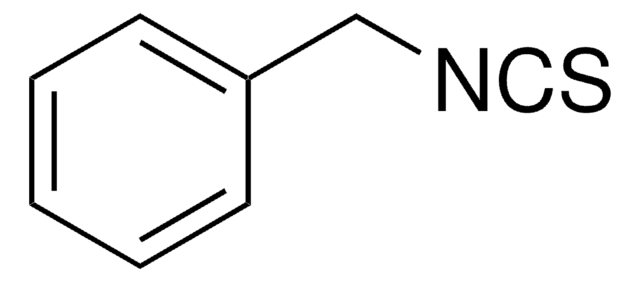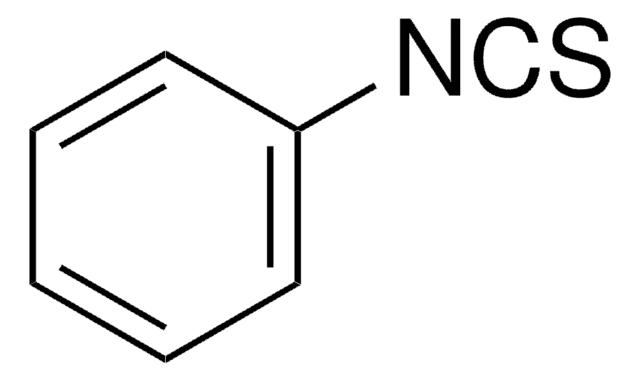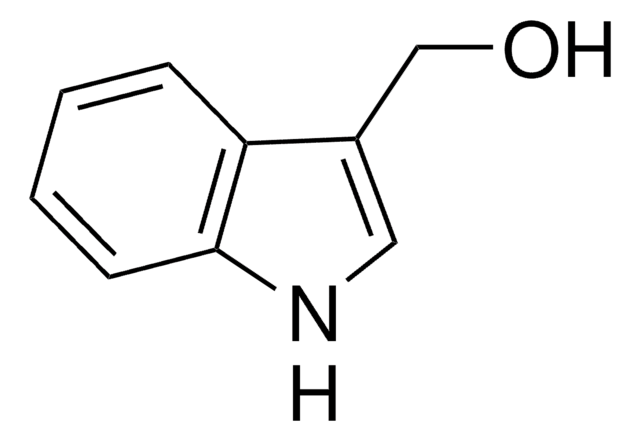W401404
2-Phenylethyl isothiocyanate
FG
Sinónimos:
Phenethyl isothiocyanate, 2-Phenylethyl isothiocyanate
About This Item
Productos recomendados
origen biológico
synthetic
grado
FG
Fragrance grade
Halal
Kosher
Agency
follows IFRA guidelines
cumplimiento norm.
EU Regulation 1223/2009
EU Regulation 1334/2008 & 178/2002
índice de refracción
n20/D 1.5888 (lit.)
bp
139-140 °C/11 mmHg (lit.)
densidad
1.094 g/mL at 25 °C (lit.)
aplicaciones
flavors and fragrances
Documentación
see Safety & Documentation for available documents
alérgeno alimentario
no known allergens
alérgeno de la fragancia
no known allergens
Organoléptico
green; sulfurous
cadena SMILES
S=C=NCCc1ccccc1
InChI
1S/C9H9NS/c11-8-10-7-6-9-4-2-1-3-5-9/h1-5H,6-7H2
Clave InChI
IZJDOKYDEWTZSO-UHFFFAOYSA-N
Información sobre el gen
human ... CYP1A2(1544)
¿Está buscando productos similares? Visita Guía de comparación de productos
Categorías relacionadas
Descripción general
Palabra de señalización
Danger
Frases de peligro
Consejos de prudencia
Clasificaciones de peligro
Acute Tox. 4 Dermal - Acute Tox. 4 Inhalation - Acute Tox. 4 Oral - Eye Irrit. 2 - Resp. Sens. 1 - Skin Irrit. 2 - Skin Sens. 1 - STOT SE 3
Órganos de actuación
Respiratory system
Código de clase de almacenamiento
10 - Combustible liquids
Clase de riesgo para el agua (WGK)
WGK 3
Punto de inflamabilidad (°F)
235.4 °F - closed cup
Punto de inflamabilidad (°C)
113 °C - closed cup
Equipo de protección personal
Eyeshields, Faceshields, Gloves, type ABEK (EN14387) respirator filter
Elija entre una de las versiones más recientes:
¿Ya tiene este producto?
Encuentre la documentación para los productos que ha comprado recientemente en la Biblioteca de documentos.
Los clientes también vieron
Global Trade Item Number
| Número de referencia del producto (SKU) | GTIN |
|---|---|
| W401404-100G-K | 4061837820922 |
| W401404-1KG-K | 4061837820939 |
| W401404-25G | |
| W401404-100G | |
| W401404-1KG | |
| W401404-25G-K | 4061837820946 |
| W401404-SAMPLE | |
| W401404-SAMPLE-K | 4061837537905 |
Nuestro equipo de científicos tiene experiencia en todas las áreas de investigación: Ciencias de la vida, Ciencia de los materiales, Síntesis química, Cromatografía, Analítica y muchas otras.
Póngase en contacto con el Servicio técnico











